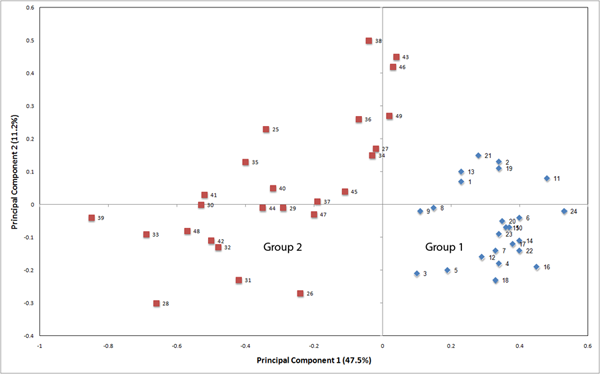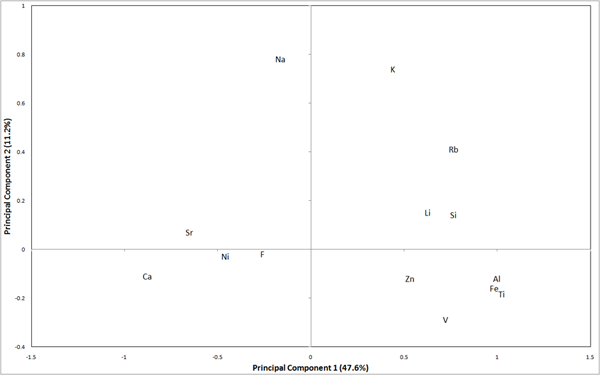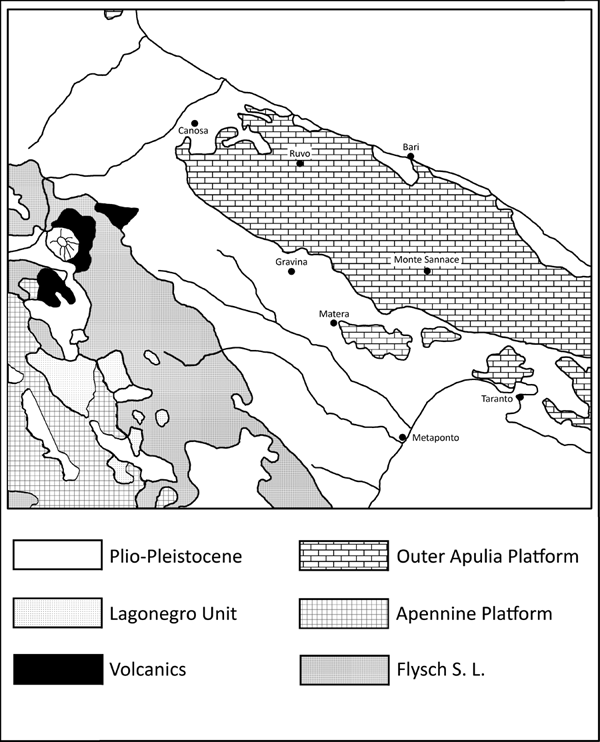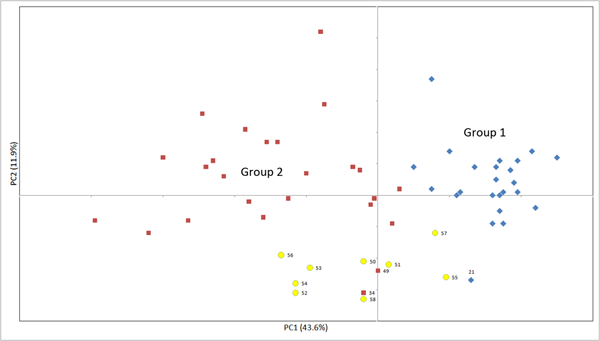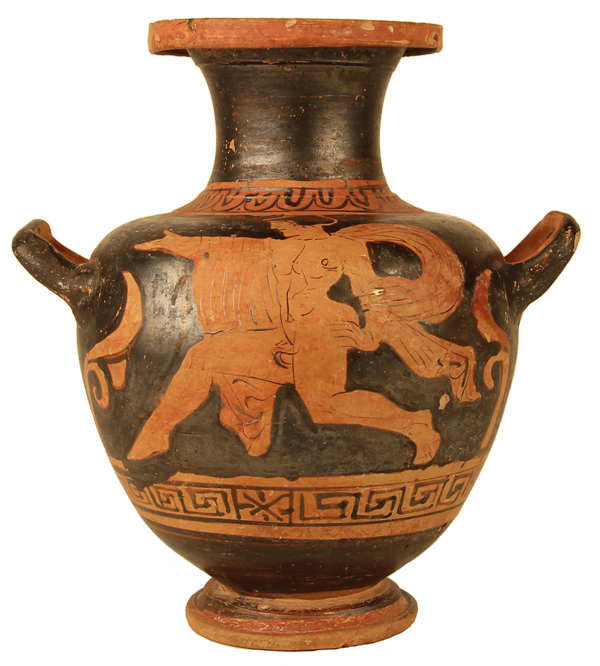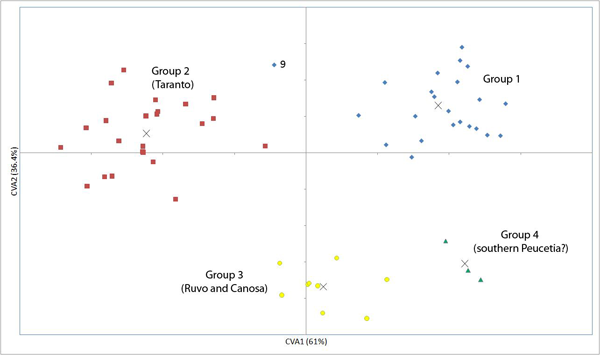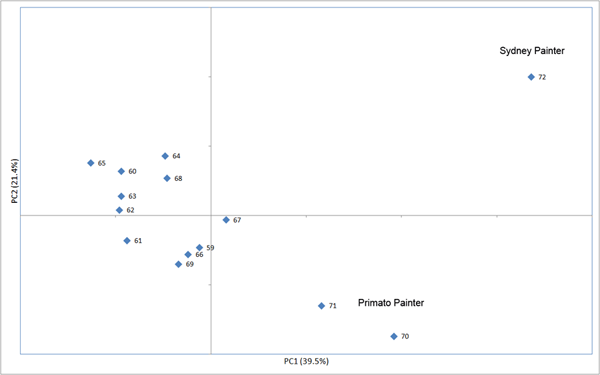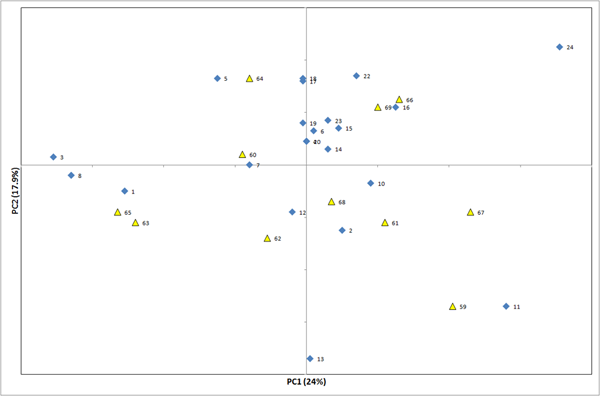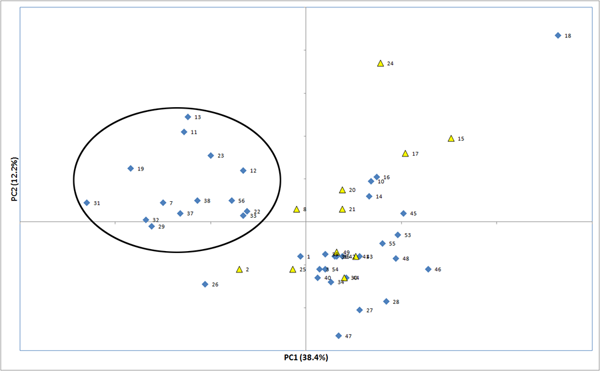
Chapter 11: E.G.D.Robinson, Archeometric Analysis of Apulian and LucanianRed-Figure Pottery
WF 134: Plot of the Principal Components Analysis (PCA) of results for Apulian red-figure samples 1-49.
WF 135: Plot of the elemental scores for the PCA in WF 134.
WF 136: Close-up photographs of Apulian red-figure. A: fragment from a volute-krater or amphora by painter near the Lycurgus Painter (sample 19); B: hydria fragment by the Sarpedon Painter (sample no. 29); C: volute-krater fragment by the Darius Painter (sample no. 37); D: Early Ornate hydria fragment (unattributed, sample no. 32).
WF 137: Schematic geological map of southern Italy, after Laviano and Muntoni 2007, fig. 5.
WF 138: PCA of samples 1-59, with "provincial" Apulian red-figure and Gnathia pottery (yellow circles).
WF 139: Red-figure miniature hydria, Nicholson Museum inv. 98.68 (sample no. 34).
WF 140: CVA of the groups defined in WF 138, with group centroids marked by crosses.
WF 141: PCA of Lucanian red-figure in the Nicholson Museum (permission of the Nicholson Museum)
WF 142: PCA of Apulian Group 1 (diamonds) and Metapontine red-figure in the Nicholson Museum (triangles).
WF 143: PCA of the data reported for Apulian and Lucanian red-figure pottery in Thorn and Glascock 2010, Table 3: Apulian red-figure (diamonds) and Lucanian red-figure (triangles). The samples within the ellipse are precisely the same as Thorn and Glascock's Group 2.
